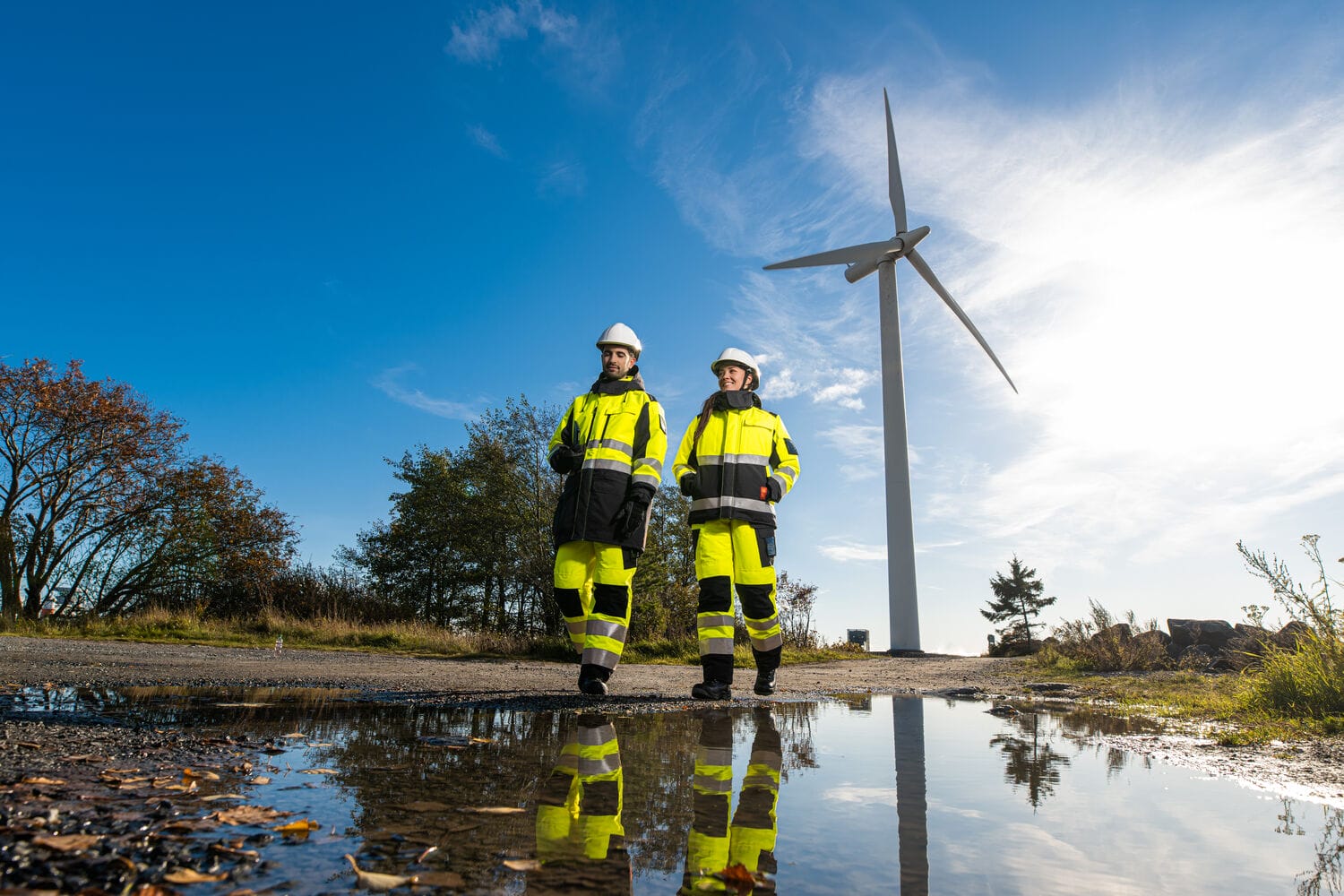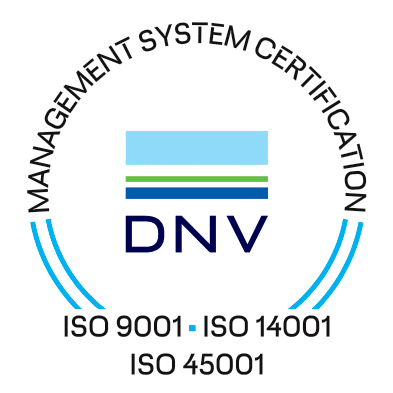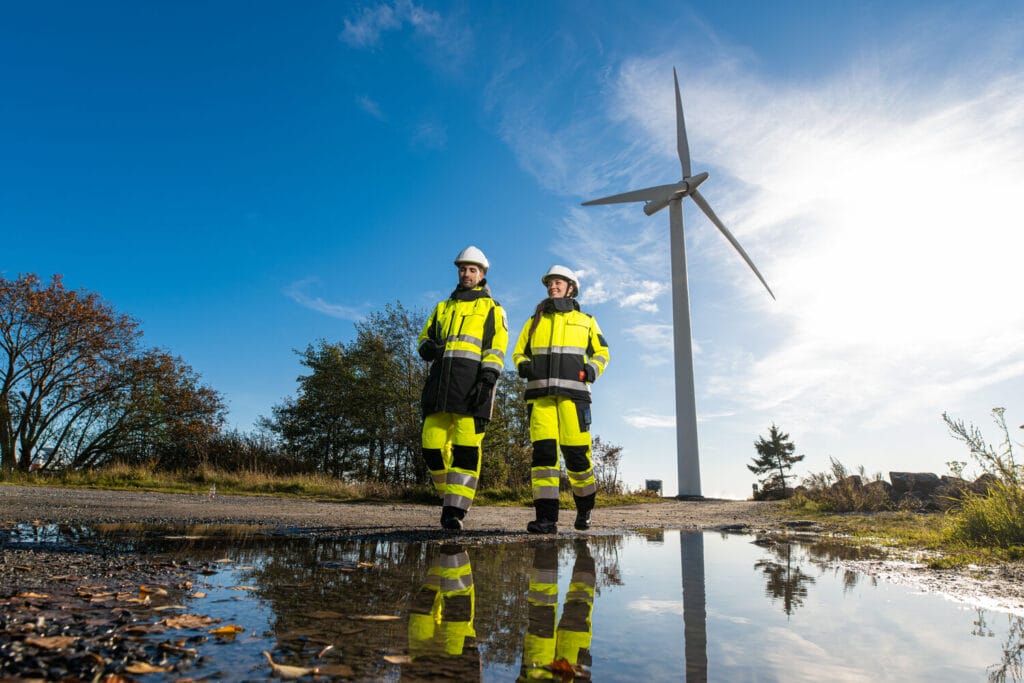
Understanding ISO 14001: Our environmental standard certification
ISO 14001 is an internationally recognised standard that sets out the requirements for environmental management systems (EMS). It helps us understand how our business operations, products, and services impact the environment.
The standard provides an overall framework for managing these impacts, considering everything from legal compliance, product lifecycle thinking, and environmental policy to training employees and setting goals for continuous improvement.
Tanja Korhonen, Process Specialist at Lindström working with environmental and sustainability related topics, explains why this standard is so important at Lindström, and what fulfilling its requirements looks like in day-to-day operations.

What is the ISO 14001 standard, and why is it important?
By adhering to ISO 14001, our customers and partners can rest assured that we’re committed to continuously improving our environmental performance by identifying, managing, monitoring, and controlling environmental aspects, impacts, and risks.
ISO 14001 enhances our internal processes, ensuring continuous improvement in our environmental performance. Since we are certified, our performance is also regularly audited by an objective body. This, in turn, ensures we properly implement the standard and that we comply with the requirements giving us credibility in terms of how environmental issues are managed within our organisation.
Tanja Korhonen, Process Specialist
“Being ISO 14001 certified helps Lindström gain stakeholder trust, enhance our reputation, and even gain a competitive advantage. It’s a win-win situation.”
Setting clear targets and regularly monitoring our progress helps us achieve our set objectives and develop our environmental practices. “This leads to better resource use and a smaller environmental footprint, ultimately helping to protect our planet,” says Tanja.
A key part of the standard is making sure everyone in the company—from employees to top management—is committed to the environmental management system. Tanja explains: “Without the feeling of ownership from top to bottom, it would be very difficult to achieve our objectives and make continuous improvements.”
ISO 14001 follows the plan-do-check-act model and includes the following requirements:
- Define the scope of the EMS: what it’s for and what it covers
- Understand the needs and expectations of interested parties
- Leadership and commitment
- Define roles, responsibilities, and authorities related to the EMS
- Ensure adequate resources, employee awareness, proper competencies, and effective internal and external communication
- Create an environmentally policy
- Comply with legal and other requirements
- Conduct a thorough environmental aspect and impact assessment, including risk and opportunities
- Set and fulfill environmental objectives, targets, and programs that are SMART (specific, measurable, achievable, realistic, and time-bound)
- Maintain proper documentation to verify effective environmental processes
- Establish procedures for emergency preparedness and response
- Monitor and measure environmental performance
- Monitor compliance through an internal audit program
- Address nonconformities and take corrective actions
- Conduct regular management reviews
- Pursue continuous improvement by regularly enhancing performance and improving the EMS based on review and evaluations
What ISO 14001 compliance looks like at Lindstrom
ISO 14001 principles are part of our management system procedures, guidelines, and work instructions. The environmental aspect and impact assessment is a crucial part of the ISO 14001 framework. It’s the foundation for our environmental work, helping us identify key areas for development and recognize our main impacts on nature, including related risks and opportunities.
Harri Puputti, Director of Quality and Compliance at Lindström, explains: “The beauty of management system standards lies in their harmonised structure. When a company has a quality management system, adding an environmental management perspective further enhances it.”
Here are some key ways we fulfil ISO 14001 requirements in our day-to-day operations:
- Internal and external audits: We actively audit our sites to ensure compliance with our management system. Audits help us catch any issues, analyse their root causes, and create corrective action plans to prevent them from happening again. We’re also regularly audited by a third party to ensure we meet the standard’s requirements.
- Employee training: We regularly train our employees so they understand the environmental impact of our activities and their own actions. We ensure they’re familiar with our environmental policy and goals, and how their daily work helps achieve them.
- Documentation: We make sure our internal management system documentation is up-to-date. Each country also has a consistent way of tracking changes in local laws and regulations, and keeps a regularly reviewed law register.
“Everybody has an impact on the way we operate,” says Tanja. “Sustainability is in our DNA—everybody sees it as an important topic. And with knowledge, a sense of ownership grows within the company.”
Optimising our laundry processes is another way we comply with ISO 14001. Our laundries create a yearly environmental program to set and meet targets for key performance indicators (KPIs) like water usage, energy consumption, detergent use, and textile waste recycling.
In our environmental aspect and impact assessments, the laundries look for opportunities like partnering with recyclers to reduce textile waste and using more recycled and biobased fibres.
How ISO 14001 fits with our larger sustainability goals
Through our environmental assessments under the ISO 14001 standard, we’ve identified these main areas for improvement, in line with our sustainability goals:
Textile waste management
This includes how much waste we produce and how we handle it after use. Our ambitious goal is to recycle 100% of our textile waste by 2025. To get there, we’ve set yearly group-level milestones and laundry-level targets. We’ve made good progress so far, as we reached a 74% recycling rate at the end of 2023.
Reducing GHG emissions
Greenhouse gas (GHG) emissions play a big role in climate change. By 2030, we aim to reduce our GHG emissions by 50% across the value chain from the 2021 levels. Our long-term target is net-zero emissions by 2050.
These goals are backed by the Science Based Targets initiative, which ensures we’re in line with the latest climate science to limit global warming to 1.5°C.
EcoVadis sustainability performance
Our latest goal is to upgrade our EcoVadis sustainability gold medal to platinum, which would put us amongst the top 1% of all businesses assessed for sustainability performance.
EcoVadis assessments allow us to evaluate our sustainability performance, and showcase our efforts to all our stakeholders.
Managing climate risks to protect our planet
Climate change and upcoming EU sustainability reporting rules are pushing us to further assess risks, evaluate their impact on our business, and create plans to handle issues like water stress and extreme weather.
The Corporate Sustainability Reporting Directive (CSRD), for example, emphasises increasing supplier involvement by evaluating their sustainability and monitoring supply chain performance.
As regulations tighten, we focus on systematic process control and data analysis to find solutions. It takes a combination of small, incremental improvements and bigger leaps, while investing in the best available technology.
Harri Puputti, Director of Quality and Compliance




